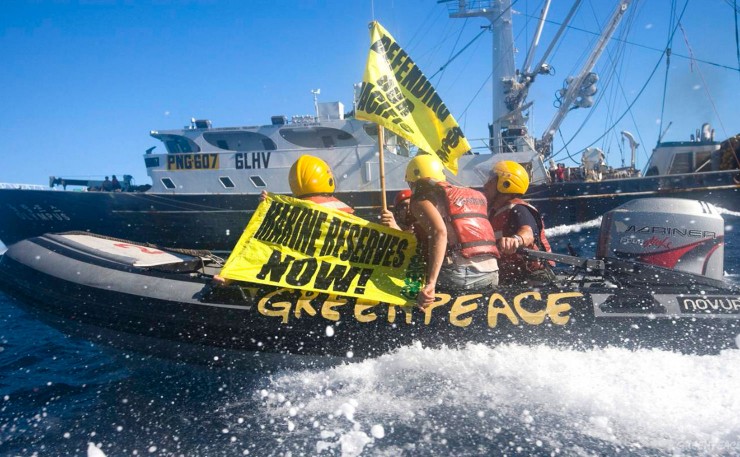The story of how Greenpeace grew into the powerful environmental advocate it is today, is in many ways a story about the origins of the global green movement, and it’s been immortalised in a new film from award-winning Director Jerry Rothwell, titled How To Change The World.
The film chronicles the adventures of an eclectic group of young pioneers — Canadian hippie journalists, photographers, musicians, scientists and American draft dodgers — from their first journey when they set sail to stop Richard Nixon’s atomic testing in 1971.
In typically daring fashion, the film shows Greenpeace activists putting their bodies on the line to block whalers and sealing ships, and figuring out how to harness the emerging global mass media to bring these images and the stories behind them to a worldwide audience.
Rothwell has delved deep into the 1500 silver cans of 16mm film stored in Greenpeace’s Amsterdam vaults, which had been hardly touched since they were shot in the 1970s. He traces the story of how Greenpeace and the global environmental movement was inspired by humanity’s insatiable appetite for finite natural resources, often at the expense of marginalised and vulnerable communities.
Most of the footage was shot by Greenpeace crews as they struggled against the environmental destruction being wrought by corporate power, giving viewers a unique insight into the dramatic moments of defiance and valour that are the foundation of the organisation’s reputation for powerful non-violent direct action.
It wasn’t always so. How To Change The World explores Greenpeace’s journey to becoming a global organisation that boasts 41 national offices across the planet and a staggering roll-call of 2.7 million members.
The film centres on a charismatic journalist, Bob Hunter, who proved key in uniting a ramshackle group of young activists thrown together by circumstance in those early days in Vancouver, Canada.
His success in focusing that pack of ‘mystics and mechanics’ to a single, powerful, purpose is emblematic of the courage and conviction that continues to fuel Greenpeace’s unique brand of activism.
Hunter’s writings, journals, animations and comics, along with interviews with key players, provide a rich tapestry of information and emotion; a strong voice to guide viewers through the early in-fights, tactics and victories that shaped what Greenpeace has become.
For anyone concerned about the climate crisis, the aggressive and unabated clearing of the world’s forests, or the continuing degradation of global oceans, How To Change The World is a must watch.
Showing at Dendy – Newtown Sydney, Cinema Nova – Carlton Melbourne, Luna on SX – Fremantle Perth and Cinema Paradiso – Northbridge Perth.
Luckily, paid subscribers to New Matilda have the opportunity to see it for free. Just email us and tell us in 30 words or less what environmental activist or campaign you think has done the most to ‘change the world’. Entries close 8pm Sunday September 27.
Donate To New Matilda
New Matilda is a small, independent media outlet. We survive through reader contributions, and never losing a lawsuit. If you got something from this article, giving something back helps us to continue speaking truth to power. Every little bit counts.




